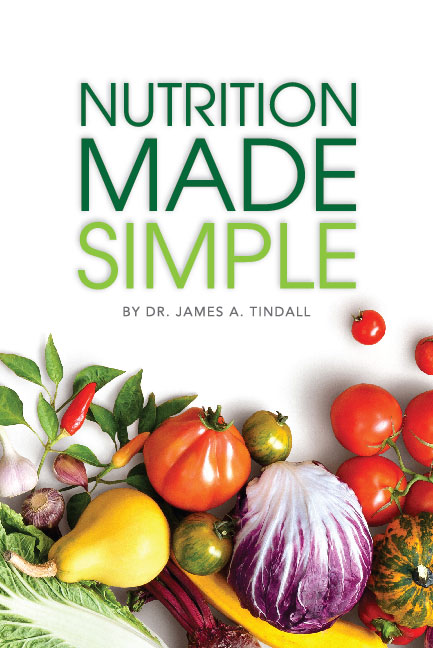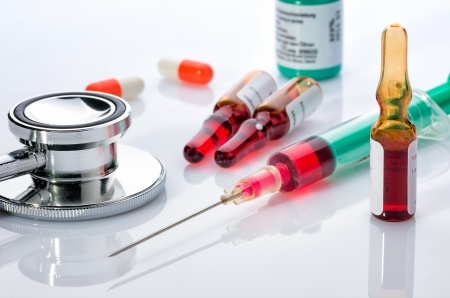Many athletes use a wide variety of pharmacologic agents. They believe that a specific drug will enhance or improve strength, skills, power, endurance, and/or stamina. This drug use is on the upswing among high school, college, and professional athletes, even among children as young as 11 to improve body image.
The ingestion of synthetic agents, dietary supplements, and other substances can and often do precipitate adverse effects ranging from nausea, hair loss, itching, and nervous irritability, to other problems. Sometimes, severe consequences can result, such as sterility, drug addiction, liver disease, and even death caused by liver or blood cancer.
The purpose of this information section is to educate the reader about various substances that are often ingested by not only athletes, but old and young alike to improve performance, increase strength, and resist aging. We at MyHAF do not endorse the use of anabolic steroids and other possibly harmful and illegal substances.
Anabolic Steroids:
The use of anabolic steroids began gaining favor in the early 1950s for medical use. Primarily to treat patients who were deficient in natural androgens or those with muscle-wasting diseases. Since then, they have been used for the treatment of osteoporosis, severe breast cancer in women, and as a counter to severe lean body mass loss in HIV patients. Prescription for medical purposes is legal in the United States. However, the sale (Anabolic Steroid control Act, initially legislated in 1990) or possession for non-medical use is illegal.
Steroids have become an integral part of competitive sports on a world-wide basis. Currently, it is estimated that 90% of male and 80% of female professional bodybuilders use androgens, often combined with stimulants and diuretics, believing that their use augments training effectiveness. It is also estimated that 30% of professional baseball players use anabolic steroids hoping for enhanced performance.
Anabolic steroids function similar to testosterone. They bind with special receptor sites on the muscle and other tissues. Testosterone contributes to male secondary sex characteristics, including gender differences in muscle mass and also strength that develop at the onset of puberty. By synthetically manipulating the steroid’s chemical structure to increase muscle growth (from anabolic tissue building and nitrogen retention), the hormone’s androgenic or masculinizing effects are reduced. However, a masculinizing effect of these synthetically derived steroids still exists, particularly in females.
Generally, athletes combine multiple steroid preparations in both oral and injectable form, called stacking, believing that the variety of androgens differ in physiologic actions. Also, they progressively increase drug dosage, called pyramiding, usually in 6-12 week cycles. The rates that are currently used often exceed recommended medical dose rates by 40-fold or more. The athlete then progressively decreases dosage in the months or weeks prior to competition to lessen the chance of detection at testing. This disparity in dosage rates between that used in research and that used by athletes has increased the credibility gap between scientific findings, which often show no effect due to steroid use, and what the athletic community believe to be true. Essentially, users in the athletic community have adopted a “more is better” approach.
As an example, Anadrol-50 has a recommended dose of 50 mg taken orally. It costs about $120 per 100 tablets in the medical profession. However, the black market value is $250-500. One can see that a 40-fold increase is about 2,000 mg, which is significantly different than the suggested medical dosage rate. Durabolin (officially known as Nandrolone Phenylpropionate) is an injectable anabolic steroid with a suggested medical dosage rate of 25 mg/mL. The average medical profession cost is about $30 per 5 mL vial while the black market cost is $250-500 or more for the same amount. The tablet form of steroids are typically called “orals.” These oral androgens do not metabolize into testosterone, but act directly on androgen receptors and are not as biologically active as the injectable form. The injectable form, known as “oils” or “waters” usually have longer-lasting effects than the oral form. The injectable form release slowly into the body once the injection enters a muscle, typically the buttocks. One injection at the suggested medical dosage rate can maintain normal serum testosterone levels for about 10-14 days.
As an example of steroid abuse, the cycling of steroids generally coincides with competition and, the examples below are only one or two of a great many combinations. This use coincides with the goal of achieving maximum muscle strength and size at competition. Thus, as in a periodized training program, the off-season steroid cycle differs considerably from pre-competition conditions for both the drugs taken and their respective dosage. For example, an 16 week off-season cycle for a bodybuilder may include four steroids (Dianabol – 110 mg, Dynabolon – 125 mg; Plenastril – 150 mg; Sustanon 250 – 100 mg) taken at a high dosage during week 1 (rates listed) then, progressively reduced during and at the end of the 18-week period (Dianabol – 10 mg, Dynabolon – 10 mg; Plenastril – 20 mg; Sustanon 250 – 10 mg). Initially, the dosage rate in week one will be about 1.0 – 1.7 mg/kg of body mass. The bodybuilder will then follow a 6-8 week cycle of human chorionic gonadotropin (HCG) and clomiphene citrate (Clomid-a synthetic hormone usually used to treat female infertility) to increase testosterone concentrations. Taking these hormones with exercise training supposedly increases lean body mass above off-season peak level. Following this, the athlete will typically cycle to another 18 to 20-week regimen of different steroids, e.g. Oxandrolone, Primobolan, Masterone, Stromba, using a varying dosage rate throughout the cycle. For example, Oxandrolone in week 1 at 90 mg to 60 mg in week 12; Masterone at 100 mg in week 1 to 500 mg in week 12; and Primobolon at 300 mg in week 1 to 250 mg in week 12. These rates exceed recommended medical dosage rates. In addition to the anabolic steroid use, high intakes of protein, dietary supplements, other synthetic hormones such as HGH, and sometimes, herbal preparations will be added to augment steroid effect.
While the reader may believe that steroid abusers are typically very muscular, it may surprise you to know that abuse is widespread in many competitive athletes such as track and field, tennis, cycling, wrestling, fitness competition, road cycling, swimming, and in many professional sports. Since many athletes obtain steroids on the black market, they are typically misinformed because the seller does not know how, why, or at what dosage rates to prescribe the substance. And, like all illicit and illegal drugs, the user may take large amounts for prolonged time periods. Without medical monitoring and supervision, many will suffer harmful alterations in physiologic function. Individuals have been know to die at middle age as a result of early abuse of steroids. Some suffer prolonged kidney dialysis treatments for the rest of their life.
Steroid abuse in young teens from 11 years upward is on the rise. It is estimated that 1 of 15 high school students use them. At this age, accompanying risks include extreme virilization and premature cessation of bone growth. As with other drugs, they will tend to share needles that will in turn, spread other diseases. To summarize their use in this age group, as with bodybuilders and many female fitness competitors, it’s primarily used to enhance body image.
There is and has been great controversy concerning the use of anabolic steroids and their effects on human body composition and exercise performance. Most of this controversy stems from statistical experimental design and the fact that athletes typically use a much higher rate than medical professionals prescribe and that they themselves, by law, are not allowed to exceed in a typical experiment. Use duration, nutritional supplementation, training intensity, previous use, and a host of other factors determine the effect of steroids on the individual. Research with animals have proven clinically that steroid use, combined with exercise and adequate protein intake, stimulates protein synthesis and increases muscle protein content. In other experiments, no stimulation was found to increase muscle protein content. As a matter of fact, for every experiment that show gains or augmentation of body mass and reduction of body fat by men and women who use steroids, other studies will show no effect. This suggests that there is strong differences in response among users due to physiological individuality.
Advertisement: Amazon (click on photo for more info)

So what do we know about steroids and their use?
The opinion of most health-care professionals is that there is an infrequent but distinct possibility of harmful side effects from the use of anabolic steroids, particularly the orally administered types and that these harmful effects far outweigh any potential ergogenic effect. Most athletes use dosage rates in the neighborhood of 10 to 100 times greater than medically prescribed rates. This can lead to long-lasting impairment of normal testosterone endocrine function, infertility, reduced sperm concentrations, and decreased testicular volume. Also, use of steroids with exercise training may produce connective tissue damage that will decrease tendon tensile strength and elasticity, which can be particularly detrimental in old age. Steroids also cause chronic stimulation of the prostate gland, injury and functional alterations in cardiovascular function, increased blood platelet aggregation, and other harmful issues. From a medical standpoint, blood platelet aggregation can compromise cardiovascular system function and health, as well as increase the risk of stroke and heart attack.
Additional problems can be the shortening of longevity, liver and kidney tumors, lymphosarcomas (cancer), and heart damage, often in combination. Liver damage is typically seen in athletes taking steroids. Female athletes who use steroids will generally experience deepening voice, facial hair, menstrual irregularities, clitoral enlargement, and reduced breast tissue. In general, for both male and female athletes there will be an increase and increased risks in LDL’s, i.e., resulting in high cholesterol due to reduction of HDL-C and increasing the risk of coronary artery disease, potential for neoplastic liver disease, depression upon withdrawal, peliosis hepatitis (localized blood filled lesions), aggressiveness, hyperactivity, and irritability. Increase of these side effects can lead to impaired thyroid function, stroke, heart attack, high blood pressure and other problems. One of these other problems is that the liver can actually fail and the patient will die. Thus, there are potentially serious adverse effects from anabolic steroid use, even when a doctor prescribes steroids at recommended rates. Consequently, more is not better, it could be much, much worse.
For those who are familiar with the effects of steroids in athletes, it is easy to look at an athlete and tell if they are using steroids; a drug test is usually not necessary. While increased body image is often associated with their use, particularly in the bodybuilding and fitness arena in regard to lean, hard, massive muscles, anabolic steroid use is simply not worth it. While ones body can look great, there is a general trend for decline in the facial features of both men and women. These include age lines, reduced facial skin elasticity, wrinkles, emaciation of the face, drawn features, and other problems. This is like a car that has a great engine and runs fine for awhile, but it’s ugly on the outside, often to the point of embarrassment. Additionally, the use of steroids would be akin to adding sand to the cars engine oil. This will greatly reduce engine life and it will not run well for long. Unlike a car that can be repainted, ones looks will not return upon halting steroid use. Even plastic surgery will not help previous looks return. One should ask themselves two questions: 1) Is potential longevity and associated health risks worth the use of steroids for a few minutes of fame? 2) Would you rather know that you won on your own because of hard work or because you beat someone in unfair competition due to drug use?
Dr. Tindall and the staff at MyHealthandFitness would challenge the reader to work out more intensely with more professional level training regimens and be persistent in training, realizing that results are best achieved over time. Such a philosophy is much safer than turning to the use of products such as anabolic steroids that can destroy health and well being and even rob one of life at an early age.
As a final note, the American College of Sports Medicine (ACSM) is firmly and adamantly opposed to the use of anabolic steroids for not only the above reasons, but also because, “the use of anabolic-androgenic steroids by athletes is contrary to the rules and ethical principles of athletic competition as set forth by many of sports governing bodies… The ACSM deplores the use of anabolic-androgenic steroids by athletes.” MyHealthandFitness endorses their position!







